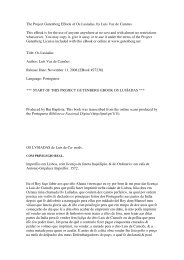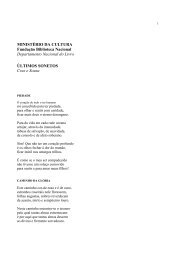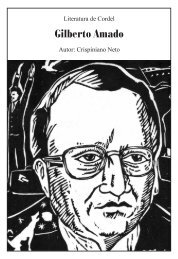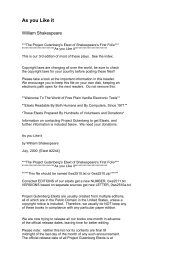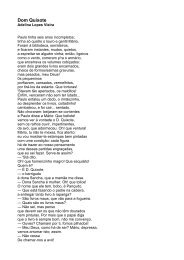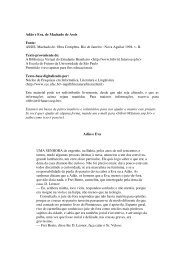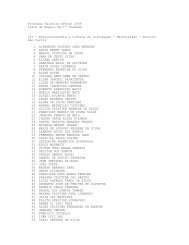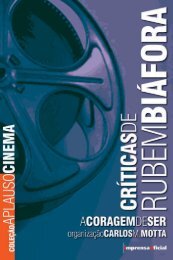You also want an ePaper? Increase the reach of your titles
YUMPU automatically turns print PDFs into web optimized ePapers that Google loves.
l'ordre teutonique, the Order of Teutonic Knights. Originally founded to protect the<br />
Christians in Palestine, the Teutonic Knights received domains in Italy and Germany<br />
from the Pope and Emperor, conquered Prussia (1228), and established there a military<br />
power which <strong>la</strong>sted four centuries.<br />
hydre. In Greek legend the hydra was a serpent with seven heads, and, when one of<br />
them was cut off, two grew in its p<strong>la</strong>ce. It is Hugo's favourite figure for cruelty or<br />
tyranny.<br />
Lusace consisted of two margraviates, the upper and the lower.<br />
elle a peur du fleuron, i.e. she is afraid to be marchioness. The flower-shaped ornaments<br />
in a crown are called fleurons. A marquis's coronet was adorned with 'fleurons'<br />
alternating with pearls and the contrast between the pointed 'fleuron' and the round pearl<br />
suggests the figure employed in the next line.<br />
tribunaux d'amour, or cours d'amour, were the celebrated courts of the Middle Ages,<br />
presided over by <strong>la</strong>dies of high rank, which gave judgement in cases of love and<br />
gal<strong>la</strong>ntry and <strong>la</strong>id down <strong>la</strong>ws for lovers. They existed principally in France, especially in<br />
Southern France.<br />
L. 369. The Wends were a S<strong>la</strong>v people who lived in Lusatia, but the name Thassilo is<br />
Bavarian.<br />
Nemrod. See note on PLEINE MER.<br />
Fenris: the great wolf of Scandinavian mythology whose growth was such that the gods<br />
in fear chained him to a rock. Some day his upper jaw will touch the sky, while his<br />
lower still rests on earth, and then Odin will tremble for his throne.<br />
le serpent Asgar. This serpent is probably of Hugo's invention and its name taken from<br />
the mythical city of the Scandinavians, Asgard, built by the gods and in which they<br />
often resided.<br />
l'archange Atti<strong>la</strong>. This is not the king of the Huns, nor is he one of the known<br />
archangels. However, as the Scriptures mention only three archangels, Gabriel, Michael,<br />
and Raphael, out of the seven, Hugo may or may not be right in speaking of an<br />
archangel of the name of Atti<strong>la</strong>. Le grand chandelier brought from the lower regions by<br />
the archangel is merely a poetic fancy and a reminiscence of the seven-branched<br />
candlestick of the tabernacle (Exod. XXV. 31-7).<br />
Actéon. Actaeon in Greek mythology was a hunter who saw Diana bathing, and was in<br />
consequence changed by the god<strong>des</strong>s into a stag.<br />
L. 437. chanfrein, the piece of armour which covered the head of the horse.<br />
Les chatons <strong>des</strong> cuissards sont barris de leurs clés. A difficult line. The chatons were<br />
the studs or screws which held the thigh-piece (cuissard) in its p<strong>la</strong>ce, and the instrument<br />
which worked them was called <strong>la</strong> clé. Barrés appears to mean simply 'fastened'. Sir G.<br />
Young trans<strong>la</strong>tes:—




